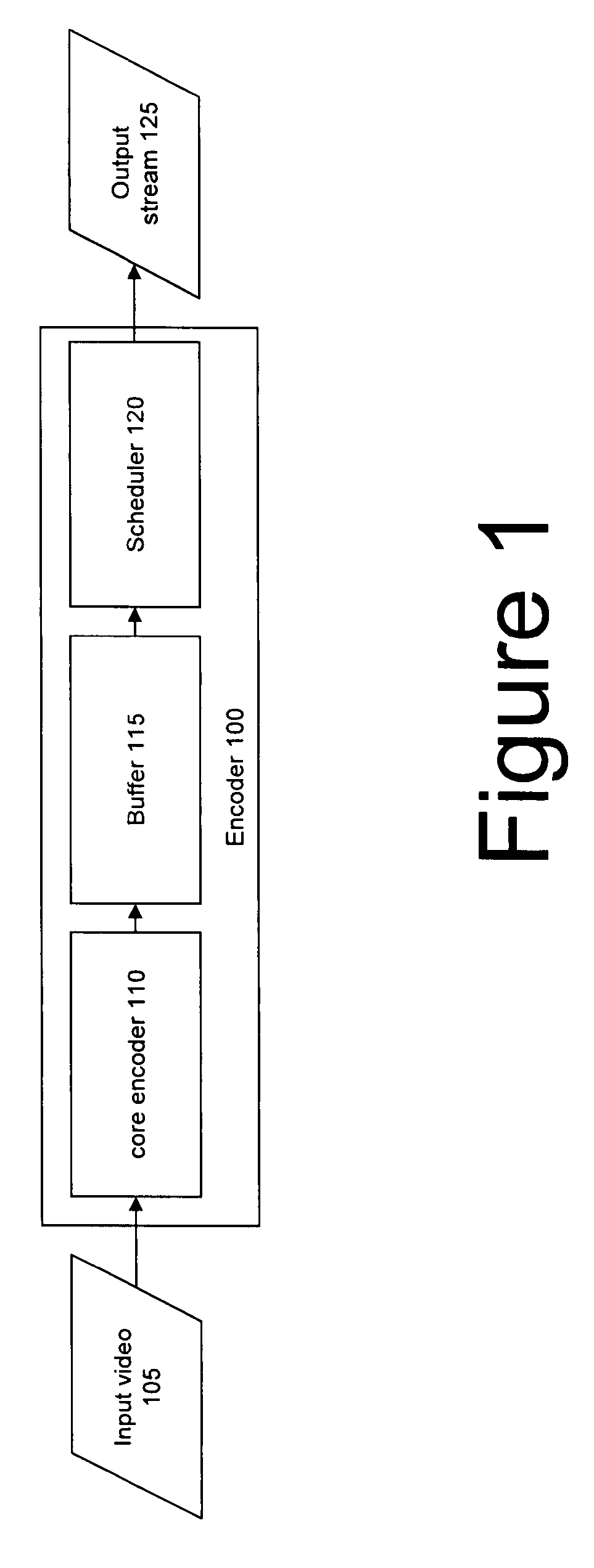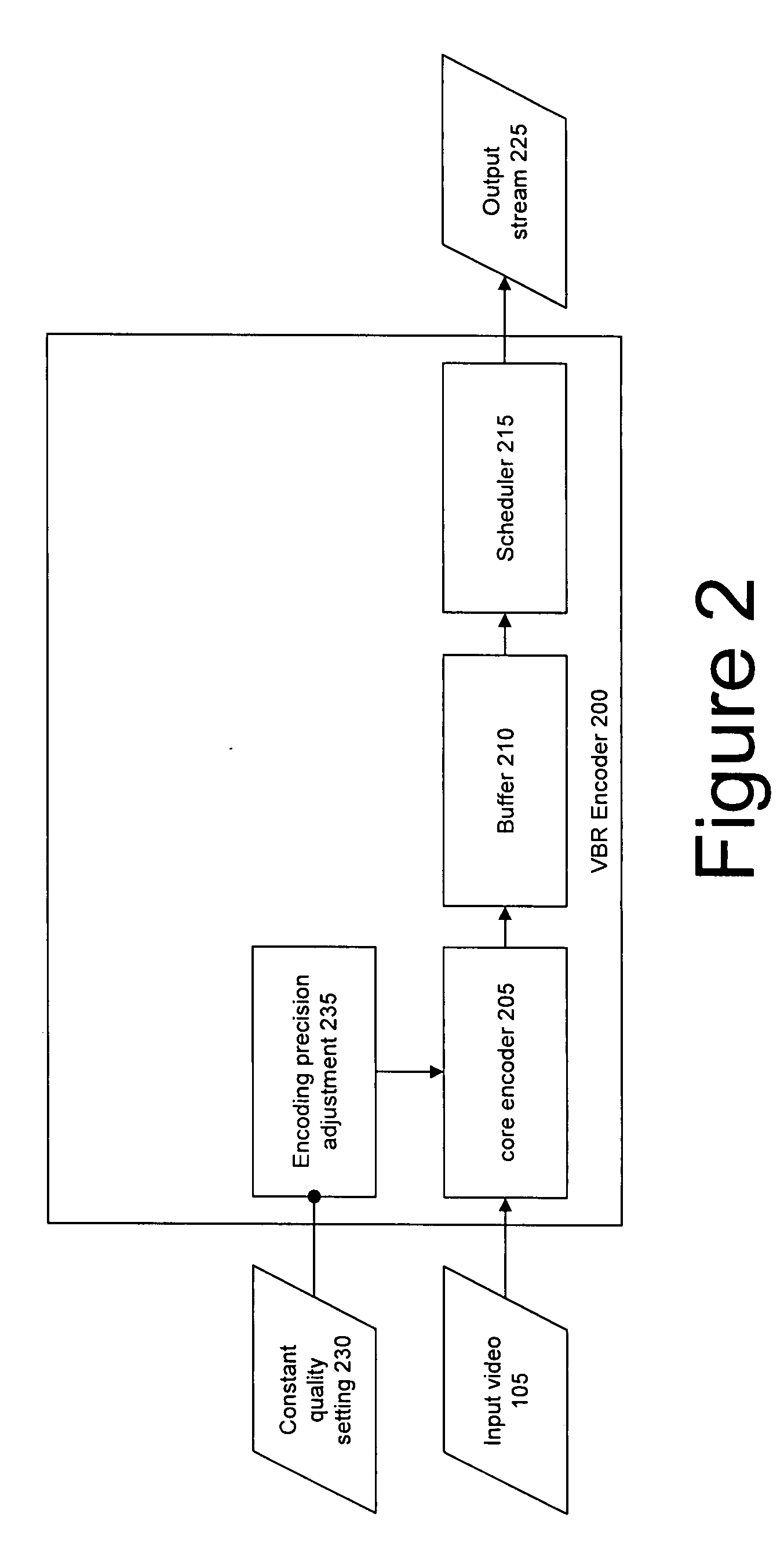Video Quality of Service Management and Constrained Fidelity Constant Bit Rate Video Encoding Systems and Method
a video encoding and service management technology, applied in the field of video processing, can solve the problems of difficult-to-encode video sequences, inability of encoders to produce enough bits to maintain targets, and longer end-to-end transmission delays for difficult-to-encod
- Summary
- Abstract
- Description
- Claims
- Application Information
AI Technical Summary
Benefits of technology
Problems solved by technology
Method used
Image
Examples
Embodiment Construction
[0036] The present invention is a video encoding implementation that may be considered of as a hybrid between VBR and CBR. In the present invention both bit rate and video quality are actively regulated. In the present invention VBR and CBR functionality is incorporated into individual encoders, which eliminates the need for a separate controller. The present invention incorporates both bit rate and video quality limits such that the present invention will not produce a bit rate greater than a predetermined bit rate and it also will not produce video having a video quality greater than a predetermined visual fidelity, where visual fidelity may be described using various methodologies described below. As such, the present invention may be thought of as constrained-fidelity constant bit rate (CF-CBR). It may also be thought of as constrained fidelity capped bit rate (also CF-CBR). In at least some implementations, the present invention may also be thought of as variable bit rate with ...
PUM
 Login to View More
Login to View More Abstract
Description
Claims
Application Information
 Login to View More
Login to View More - R&D
- Intellectual Property
- Life Sciences
- Materials
- Tech Scout
- Unparalleled Data Quality
- Higher Quality Content
- 60% Fewer Hallucinations
Browse by: Latest US Patents, China's latest patents, Technical Efficacy Thesaurus, Application Domain, Technology Topic, Popular Technical Reports.
© 2025 PatSnap. All rights reserved.Legal|Privacy policy|Modern Slavery Act Transparency Statement|Sitemap|About US| Contact US: help@patsnap.com



